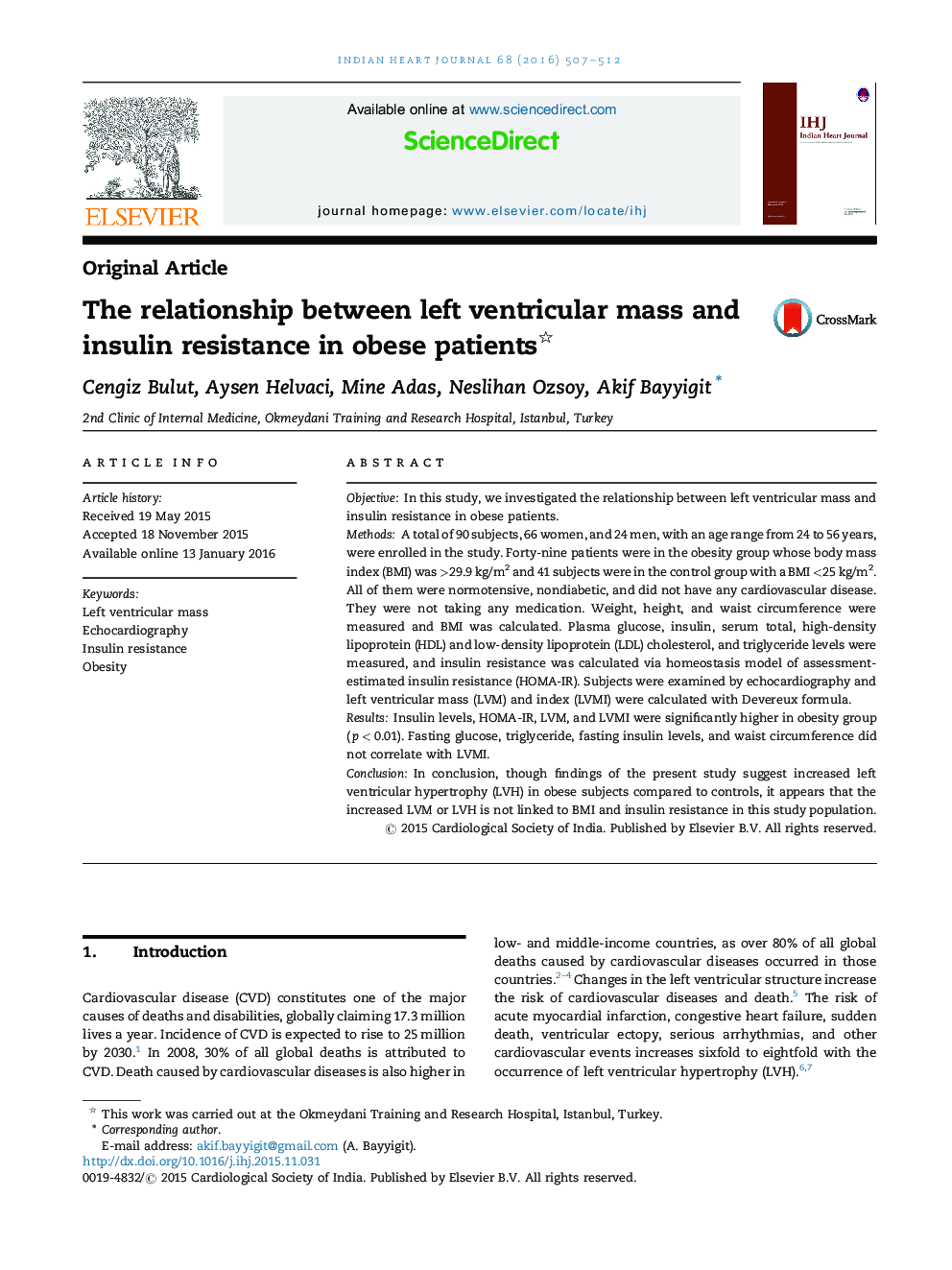| Article ID | Journal | Published Year | Pages | File Type |
|---|---|---|---|---|
| 2927320 | Indian Heart Journal | 2016 | 6 Pages |
ObjectiveIn this study, we investigated the relationship between left ventricular mass and insulin resistance in obese patients.MethodsA total of 90 subjects, 66 women, and 24 men, with an age range from 24 to 56 years, were enrolled in the study. Forty-nine patients were in the obesity group whose body mass index (BMI) was >29.9 kg/m2 and 41 subjects were in the control group with a BMI <25 kg/m2. All of them were normotensive, nondiabetic, and did not have any cardiovascular disease. They were not taking any medication. Weight, height, and waist circumference were measured and BMI was calculated. Plasma glucose, insulin, serum total, high-density lipoprotein (HDL) and low-density lipoprotein (LDL) cholesterol, and triglyceride levels were measured, and insulin resistance was calculated via homeostasis model of assessment-estimated insulin resistance (HOMA-IR). Subjects were examined by echocardiography and left ventricular mass (LVM) and index (LVMI) were calculated with Devereux formula.ResultsInsulin levels, HOMA-IR, LVM, and LVMI were significantly higher in obesity group (p < 0.01). Fasting glucose, triglyceride, fasting insulin levels, and waist circumference did not correlate with LVMI.ConclusionIn conclusion, though findings of the present study suggest increased left ventricular hypertrophy (LVH) in obese subjects compared to controls, it appears that the increased LVM or LVH is not linked to BMI and insulin resistance in this study population.
